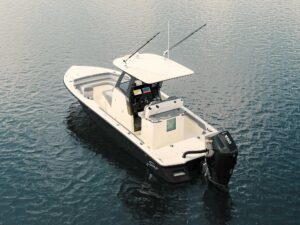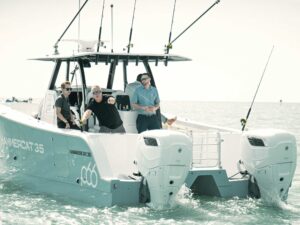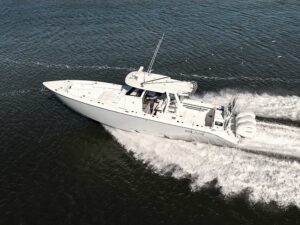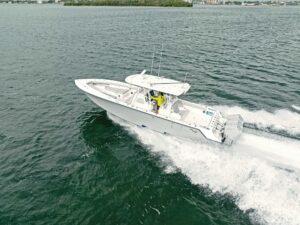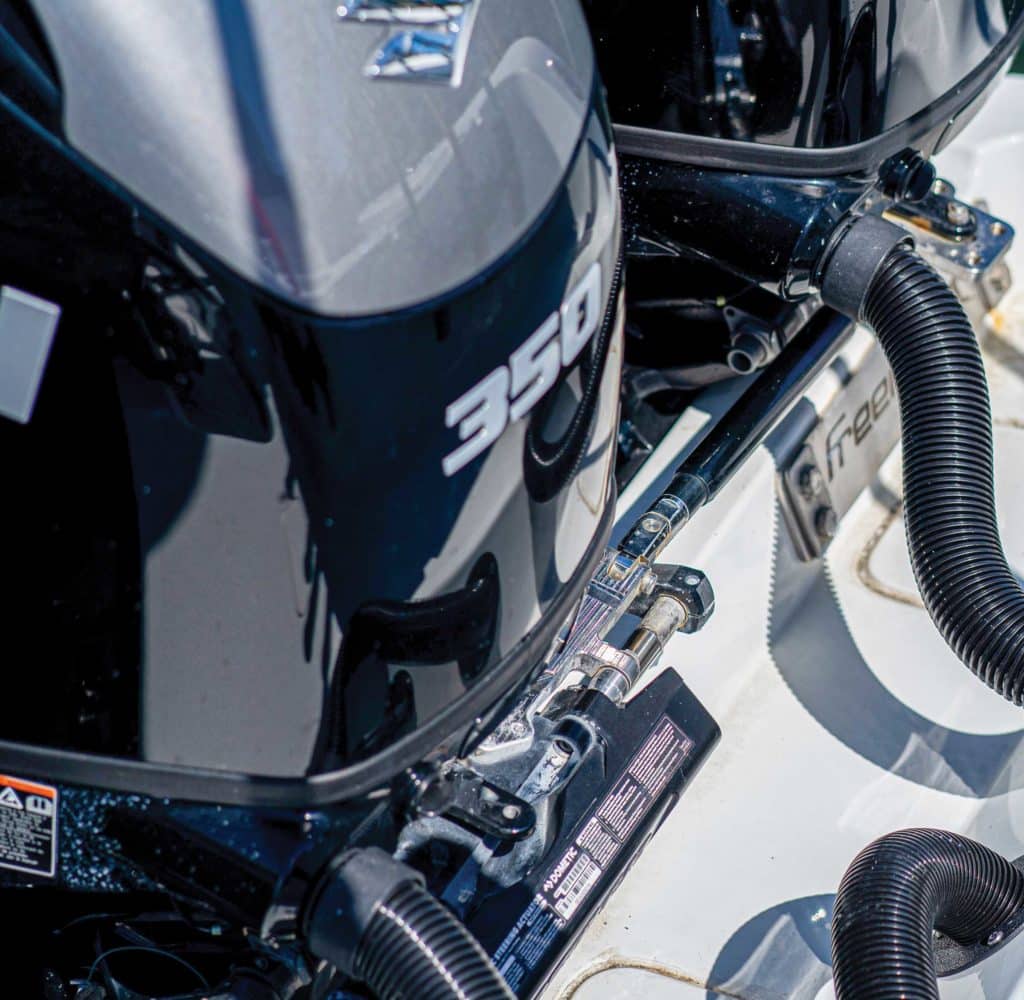
If you’ve ever fished a boat with cable steering, you’d remember that arm-jarring, herky-jerky experience. In the 1970s, many boatbuilders transitioned to hydraulic steering, and in 2012, to electrohydraulic—or power-assisted—steering, particularly for larger offshore vessels.
Yamaha changed the paradigm in 2019, delivering digital electric steering (DES) built into its 425 XTO outboards. Yamaha worked on this new technology in conjunction with SeaStar Solutions (now Dometic). Today both Yamaha and Dometic offer DES options for outboards as small as 150 hp; Dometic’s Optimus Outboard Electric Steering Actuator works with all major outboard brands, including Suzuki, Mercury and Yamaha.
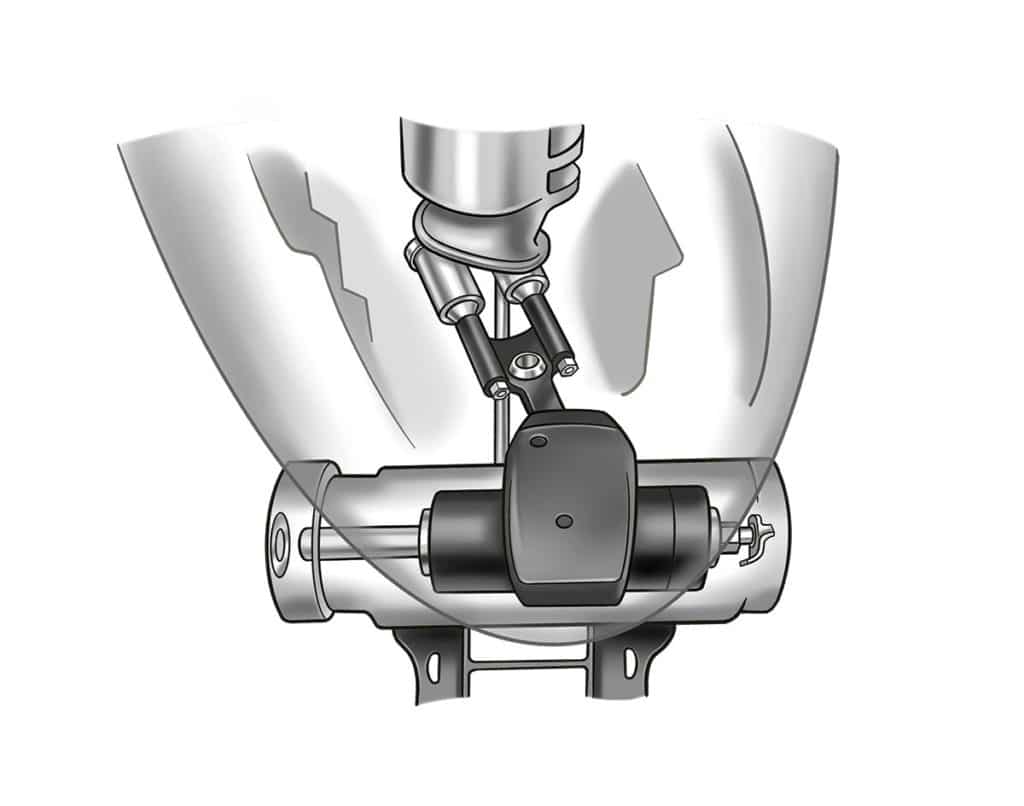
But what can DES do for anglers, and why should they want it? Here are the main advantages this technology brings to your boat-ownership experience and your day on the water:
- Less equipment and weight: Having DES means you don’t need to have hydraulic pumps, hoses or fluid in the steering system. Dometic says its all-electric steering on a twin-outboard boat weighs 33 pounds less than its Optimus EPS electrohydraulic steering.
- Better reliability: Eliminating hydraulics means eliminating hydraulic failure. “That’s one potential issue lost—the infamous ‘why is all that red fluid floating around my boat?’” says Ry Landry, product education manager for Yamaha.
- Less power draw: If you’re not actively steering your boat, these electric systems do not draw any power. That means you’ll have more amps available for other onboard electrical needs. With hydraulic systems, the pumps run continuously.
- Less maintenance: You no longer need to inspect seals, check hydraulic fluid levels or change fluid. DES requires only periodic greasing.
- Quicker, more precise steering: “The user should notice way better vessel handling and a lot more precise steering that’s a lot faster,” says Brian Dudra, an engineer and Dometic’s vice president. “That means more comfort and less fatigue for the driver.”
- Programmable lock-to-lock and friction settings: Both Yamaha and Dometic systems offer user-controllable steering settings. For instance, if you’re docking, you can program the steering to deliver four turns lock-to-lock, meaning it takes only four turns of the wheel to fully move the engines from side to side—a better setting for optimal maneuverability.
If you’re running offshore and don’t want that much steering sensitivity, you can program up to nine turns lock-to-lock. Lock-to-lock settings can also be made variable, based on rpm.
Steering friction is also adjustable. If you like your steering a little loose, you simply enable a bit of play, using the gauge controls. If seas build and you want more friction, just touch the gauge screen to change the setting.
Despite all of those advantages, including the increased reliability, common sense tells us that anything electric can fail. So, according to Landry, Yamaha built in redundancies to help ensure continuous operation.
But if the boat’s electrical system somehow falters or its batteries die, captains can use an Allen wrench to loosen the actuator—the bar at the front of the outboard that houses the roller screw that pushes the engines—and manually turn the outboards to slowly return to the dock.
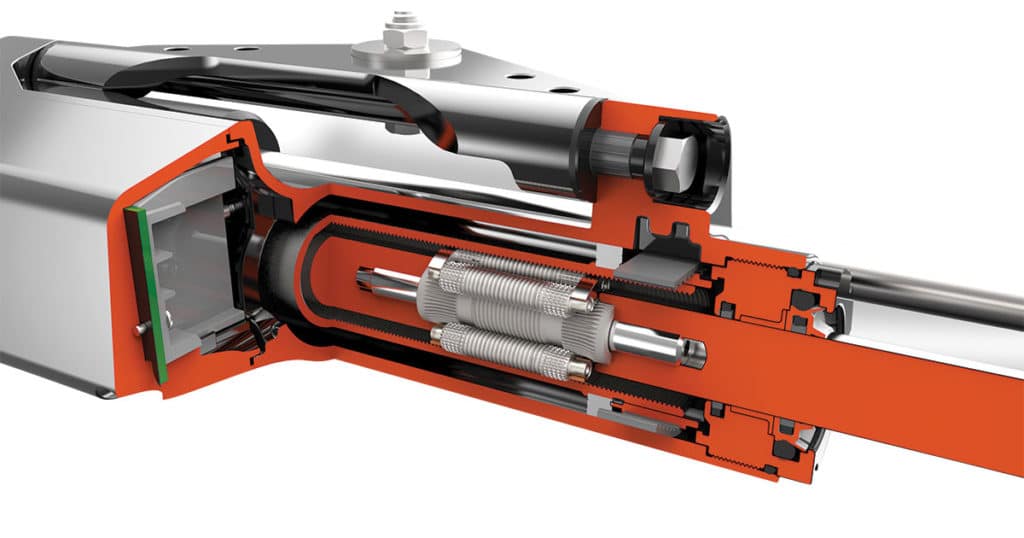
In fact, that inverted roller screw, perfected for this application by Dometic, plus a high-power brushless motor that measures 4-by-2 inches are what make this technology possible.
For boatbuilders, an electric steering system requires a simpler installation, plus it easily integrates with a joystick. A Yamaha outboard with DES built into its bracket assembly—available for the XTO as well as new V-6 F250 and F300 motors—connects to the batteries and to the helm with a data cable. Those outboards start at $30,870.
Yamaha’s bolt-on DES accessory—available for Yamaha outboards down to the F150—costs about $3,000 for the actuator and one harness, plus $540 to $925 for a digital helm, and a few hundred more for any additional harnesses needed. Installation costs vary.
Dudra says anglers can expect to pay about 25 percent more for an electric steering system compared to electro-hydraulic. Single-engine Optimus electric systems cost about $5,700 plus installation. A boat with two outboards would require two actuators; triples and quads would require two actuators and two tie bars.
The two companies agree that electric steering will guide the future of boating, but both expect electro-hydraulic, and even cable steering, to continue providing anglers with cost-effective options. After all, not everyone can own a Mercedes.

